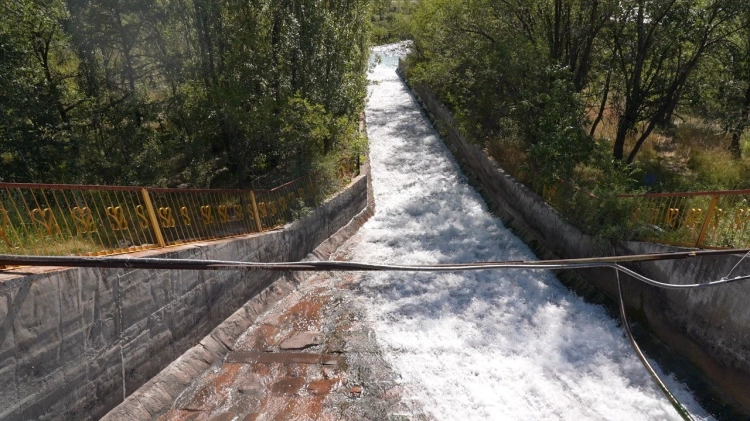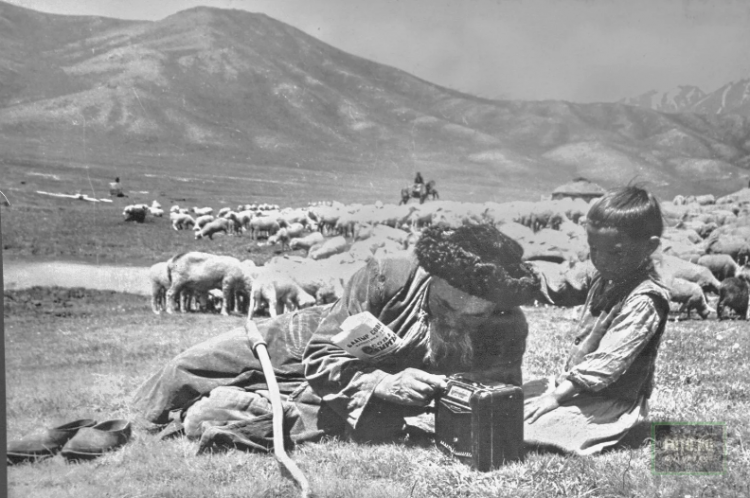FORAGE PLANTS
Forage plants constitute the most numerous and important group of useful plants in Kyrgyzstan, as the main sector of the republic's economy—animal husbandry—primarily relies on natural forage lands, where forage plants are concentrated.
More than 630 species of forage plants grow in Kyrgyzstan, accounting for one-fifth of all forage plants in the country. However, not all of them have been accounted for and studied. With a deeper and more thorough study of the flora of Kyrgyzstan, the number of forage plants will undoubtedly increase. The forage plants of the republic are of scientific and economic interest not only in terms of species diversity but also due to the role they play in the biomass of pastures and hayfields. Here, they constitute the main biomass and primary feed for animals. The role of wild forage plants, which have a complex biochemical composition and nutritional value, is significant. In many cases, they cannot be replaced by cultivated forage plants, as they contribute to the production of high-quality meat and dairy products. This is particularly important now, when the issue of effectively implementing the Food Program is acute.
The forage plants of Kyrgyzstan represent a valuable gene pool that should be utilized to create more promising and productive forage plants. Many forage plants provide valuable medicinal raw materials, such as meadow clover, creeping clover, meadow vetchling, Ural licorice, smooth licorice, creeping clover, medicinal sweet clover, dandelion, and many others.
Wild forage plants contain not only protein, fat, fiber, but also various microelements, vitamins, and amino acids. Animals consuming wild forage plants replenish their bodies with substances that are essential for their normal growth, development, and thus the production of valuable bioproducts. Humans, by consuming the bioproducts of such animals, enrich their bodies with many beneficial substances. Many wild forage plants are valuable nectar and pollen sources, which is very important for the development of the high-yielding agricultural sector—beekeeping. There are also fattening forage plants; some forage plants enhance lactation in animals, while others are quite promising for organizing artificial high-yield pastures and hayfields. All of this compels us to study forage plants more closely, use them more rationally, and thereby contribute to the implementation of the Food Program.
The forage plants of Kyrgyzstan are diverse in their floristic composition, nutritional value, palatability to animals, as well as in the biomass they produce and their role in providing feed for livestock.
Among forage plants, it is customary to distinguish grasses, sedges, legumes, and various herbs. Often, the herbaceous plants are divided into two groups: palatable and unpalatable.
In the group of unpalatable herbs, toxic and ballast plants are noted. However, this subdivision is conditional, as there are cases in nature where in some areas plants are consumed, while in others the same species are not.
The accumulation of toxic substances in plants depends not only on the biological characteristics of the species but also on the conditions in which they grow. There have been instances where in some regions plants were toxic, while in others the same species were not. For example, aconite is toxic in Kyrgyzstan but not in Norway.
Grasses. They represent an important component of forage plants.
About 300 species of various grasses grow in Kyrgyzstan, and all of them, with few exceptions, are palatable, especially before heading. They provide significant forage mass, especially in steppes, meadows, and meadow-steppes. The most valuable forage grasses include: feather grass, curly grass, oat grass, ptilagrostis, white fescue, bearded wheatgrass, reed canary grass, hair grass, hedgehog grass, ryegrass, clinopodium, short-stemmed grass, fireweed, foxtail, mortuk, meadow grass, field grass, couch grass, regneria, reed, timothy grass, egilops, barley.
A detailed characterization of forage plants is provided in the work "Forage Plants of Kyrgyzstan." Therefore, for those interested in the forage plants of Kyrgyzstan, we refer them to this work, which presents not only a detailed morphological description of forage plants but also indicates their chemical composition, amino acid content, and the content of feed units in 100 kg of grass, as well as other data.
Sedges. Sedges and kobrezia are widely distributed in Kyrgyzstan. Kobrezia is characteristic of high-altitude areas. Kobrezia pastures are usually used for grazing horses and small livestock.
Kobrezia with false hairy leaves, low kobrezia, and Pamir-Alai kobrezia are particularly widespread.
Sedges, like grasses, constitute a significant percentage of the herbaceous layer in meadows—saz and alpine meadows (where black-flowered sedge and narrow-fruited sedge dominate). There are sedges in wormwood-ephemeral semi-deserts (narrow-leaved sedge, thick-stemmed sedge, and others) and in steppes (Turkestan sedge and others).
Before heading, kobrezia and sedges are eagerly consumed by animals; they contain a lot of protein and have high digestibility. After heading, their palatability decreases sharply.
Leguminous forage plants. Leguminous plants are widely distributed in the pastures and hayfields of Kyrgyzstan. This is a very valuable group of forage plants, usually well consumed by animals.
Among legumes, it is worth noting clover, vetch, various species of alfalfa, sainfoin, astragalus, and others.
Herbs. Pastures and hayfields in Kyrgyzstan are rich in herbs. They prevail in tall grass and subalpine meadows.
In some areas of tall grass post-forest meadows, herbs make up 80-90% of the herbaceous layer. Among the herbs, there are many valuable forage plants. These include wormwood, teresken, kochia, and others. Especially valuable are various species of wormwood, which are widely distributed in deserts and steppes. However, there are forage plants that are poorly consumed by livestock: these are coarse-stemmed and ballast plants. It is advisable to reduce their presence in the herbaceous layer. However, among the unpalatable species belonging to the group of herbs, there are many useful plants.
Therefore, measures to reduce the unpalatable herbs in the herbaceous layer should be carried out very cautiously and carefully to avoid harming plant resources and disrupting natural ecological systems and biogeocenoses.
Speaking of the forage plants of Kyrgyzstan as a whole, it should be noted that they are quite diverse in various types of vegetation and different forage lands.
In deserts and semi-deserts, the most valuable are bulbous meadow grass, egilops, Caucasian feather grass, roofing fireweed, false narrow-leaved sedge, thick-stemmed sedge, pink-flowered wormwood, Tien Shan wormwood, finely dissected wormwood, and others, teresken, kochia. In saline soils—potash climacopter and others.
It should be noted that when using forage plants from deserts and semi-deserts, livestock breeders often do not take into account the biological characteristics of the species, the timing of vegetation, and the livestock load per unit area of pastures.
If these shortcomings are addressed, it seems that the forage base can be significantly improved, leading to increased livestock production.
In steppes and meadow-steppes, the main forage plants are: groove feather grass, various feather grasses (Kyrgyz, Krylov, hairy), hairy couch grass, tufted oat grass, thin-stemmed grass, blood-stopping beard grass, fluffy spike grass, Hakkel's beardless wheatgrass, chiy, ptilagrostis, Turkestan barley, narrow-leaved meadow grass, Turkestan sedge, Dzhungar coin grass, sickle-shaped alfalfa, sainfoin, Olga's wild onion, and others.
When exploiting forage plants in steppes and meadow-steppes, it is necessary to take into account that grasses become coarse after heading and are less palatable to livestock. Therefore, harvesting and grazing should be conducted before heading.
In meadows, forage plants are represented by mesophytic species; the most valuable among them are: beardless fireweed, hedgehog grass, meadow grasses (meadow, pine), foxtails (meadow and inflated), short-stemmed grass, regneria, narrow-fruited kobrezia, thin-leaved vetch, meadow vetchling, clover (meadow and creeping), hop-like alfalfa, and others. They provide good forage mass and are eagerly consumed by animals in fresh form and as hay.
In wetlands and saz, the dominant forage plants include white field grass, short-awned barley, ground reed, common reed, black-flowered sedge, kobrezia, and others.

In water bodies (lakes, ponds, canals), there are also forage plants. These include various pondweeds, algae, water milfoil, and hornwort. In some places, they form underwater meadows where aquatic animals reside.

This forage base should be used more widely, especially for fish farming, breeding muskrats, and others.
In conclusion of the discussion on forage plants of Kyrgyzstan, it should be emphasized that among the forage plants of Kyrgyzstan, there are many species with fattening properties. These include feather grass, steppe timothy, mouse vetch, opposite-leaved saltwort, and others.
A number of forage plants enhance lactation in animals (ebelek, beardless fireweed, medium star, and others).

These plants should be used more widely in livestock feeding rations. This will more effectively contribute to the successful implementation of the Food Program. Among the forage plants of Kyrgyzstan, there are many promising species that will allow for the creation of more productive artificial pastures and hayfields. Such species include: hairy couch grass, Hakkel's beardless wheatgrass, steppe timothy, bulbous barley, Turkestan barley, Bogdan barley, spreading kochia, hedgehog grass, meadow fescue, and several other species.
Rational use of forage plants will significantly increase livestock production and contribute to the successful implementation of the Food Program.

























































